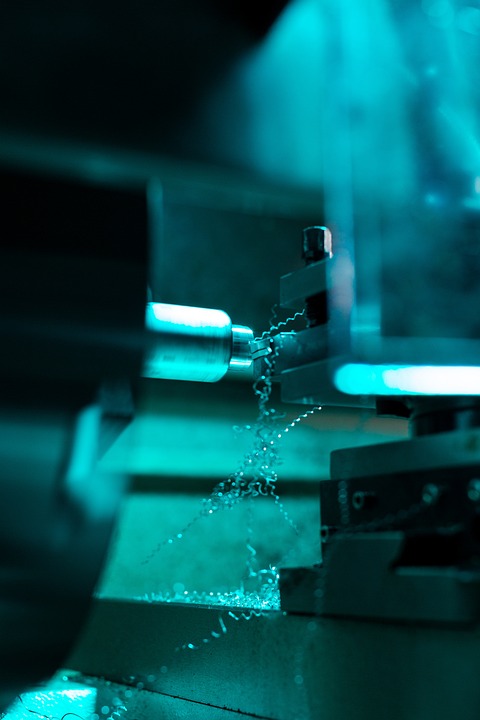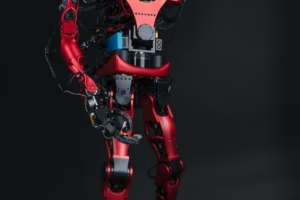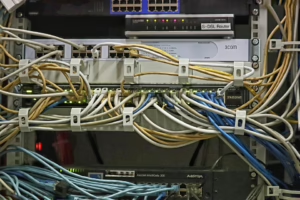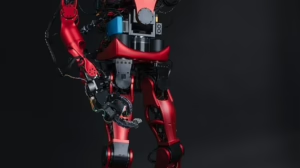Education and Career Paths in Mechatronics Engineering: What You Need to Know
Introduction
The field of mechatronics engineering intertwines mechanical engineering, electrical engineering, computer science, and control engineering. As technology advances, the integration of these disciplines has become increasingly significant, resulting in the development of smart systems and advanced automation technologies. This article will explore the educational pathways and career opportunities available in mechatronics engineering, providing insights for prospective students and professionals entering this dynamic field.
1. Understanding Mechatronics Engineering
Mechatronics is an interdisciplinary branch of engineering that combines principles from mechanical engineering, electronics, computer science, and control engineering. Its applications range from robotics to automated manufacturing systems, offering solutions that enhance efficiency, precision, and reliability.
1.1 Historical Background
The term “mechatronics” was first coined in the late 1960s by Takashi Mechatronics in Japan to describe the integration of mechanics and electronics. Over time, the field has evolved with advancements in technology, including the development of intelligent sensors and actuators.
1.2 Importance in Modern Industry
In today’s competitive landscape, mechatronics engineering is crucial to various industries, including automotive, aerospace, manufacturing, and healthcare. The rise of Industry 4.0, characterized by the Internet of Things (IoT) and smart manufacturing, has further amplified the demand for skilled mechatronics engineers.
2. Educational Pathways in Mechatronics Engineering
2.1 Prerequisites for a Career in Mechatronics
Before embarking on a career in mechatronics engineering, students typically need to fulfill certain prerequisites:
- Mathematics: A strong foundation in calculus, linear algebra, and differential equations is essential.
- Physics: Basic principles of mechanics, electricity, and magnetism are crucial.
- Computer Science: Familiarity with programming languages and algorithms is increasingly becoming a requisite.
2.2 Bachelor’s Degree Programs
Most students begin their journey in mechatronics engineering by obtaining a Bachelor of Science (B.S.) in Mechatronics Engineering or a closely related field. Core courses typically include:
- Dynamics and Statics
- Thermodynamics
- Fluid Mechanics
- Circuit Analysis
- Control Systems
2.2.1 Accreditation
It’s important for students to attend accredited programs, as this ensures that the education they receive meets industry standards. In many regions, programs accredited by bodies such as ABET (Accreditation Board for Engineering and Technology) are recognized.
2.3 Advanced Education Options
For those seeking to deepen their knowledge and specialize within the field, pursuing a Master’s degree or Ph.D. in Mechatronics Engineering or a related area is advisable. Specializations may include:
- Robotics
- Automation Systems
- Biomedical Engineering
- Control Engineering
2.3.1 Online Education
Now more than ever, online education has become a viable option, making advanced degrees accessible to those who might not be able to attend traditional on-campus programs. Renowned institutions offer online master’s programs that cater to working professionals.
2.4 Certifications and Ongoing Education
Certifications can further bolster a mechatronics engineer’s qualifications. Industry-recognized certifications in specific technologies (such as PLC programming, robotics, or CAD software) provide advantages in the job market. Continuing education courses and workshops can also help professionals stay on top of industry trends and technologies.
3. Key Skills for Mechatronics Engineers
Mechatronics engineers must possess a diverse skill set to thrive in the field. Important skills include:
3.1 Technical Skills
- Programming Languages: Proficiency in languages like C, C++, and Python is important for automation and robotics applications.
- CAD Software: Competence in Computer-Aided Design (CAD) software is essential for designing mechanical components.
- Control Systems: Understanding control theory and its application in mechatronic systems is crucial.
3.2 Soft Skills
In addition to technical expertise, several soft skills are equally important:
- Problem-Solving: Ability to troubleshoot and enhance system performance.
- Teamwork: Collaborating with interdisciplinary teams to achieve project goals.
- Communication: Clearly articulating technical information to non-engineering stakeholders.
4. Career Opportunities in Mechatronics Engineering
The increasing integration of automation and intelligent systems across various sectors has resulted in a broad array of career opportunities for mechatronics engineers.
4.1 Employment Sectors
Mechatronics engineers can find employment in numerous sectors, including:
- Manufacturing: Designing and developing automation equipment and processes.
- Robotics: Creating robots for industrial, medical, or military applications.
- Automotive: Implementing automated systems and advanced driver-assistance technologies.
- Biomedical: Developing medical devices and healthcare technologies.
4.2 Job Titles
Common job titles for mechatronics engineers include:
- Mechatronics Engineer
- Control Systems Engineer
- Robotics Engineer
- Automation Engineer
- Systems Engineer
4.3 Job Outlook and Salary
The job outlook for mechatronics engineers remains promising. According to the Bureau of Labor Statistics (BLS), the employment of mechanical engineers, which includes mechatronics engineers, is projected to grow by 4% from 2020 to 2030. Entering the field typically offers competitive salaries, with the median annual wage for mechanical engineers reported to be around USD 90,000.
4.4 Internships and Entry-Level Positions
Internships during academic study can significantly enhance job prospects. Participating in projects and internships exposes students to real-world applications and helps build a professional network, providing a competitive advantage in the job market.
5. Emerging Trends in Mechatronics Engineering
As technology advances, new trends are shaping the landscape of mechatronics engineering:
5.1 Industry 4.0
The shift towards cyber-physical systems interconnecting physical equipment and the cloud marks a significant transformation in manufacturing and automation processes. Mechatronics engineers play a key role in developing smart factories and automated production lines.
5.2 Artificial Intelligence
The integration of AI in mechatronic systems has revolutionized their functionality. From enhancing machine learning capabilities to developing autonomous systems, AI’s role in mechatronics will continue to grow.
5.3 Sustainability and Green Engineering
With a focus on sustainability, mechatronics engineers are increasingly involved in designing energy-efficient systems and environmentally friendly technologies. Innovations in renewable energy applications and sustainable manufacturing processes are on the rise.
Conclusion
Mechatronics engineering stands at the intersection of various engineering disciplines, making it a versatile and dynamic career choice. With a solid educational foundation, relevant skills, and an awareness of emerging trends, aspiring engineers can adapt to the evolving landscape of technology and industry. As the demand for smart systems and automation continues to rise, a career in mechatronics engineering promises growth, opportunity, and innovation.
References
[1] National Academy of Engineering (NAE). (2020). “Mechatronics Engineering: A Review of the Discipline.”[2] Bureau of Labor Statistics (BLS). (2021). “Mechanical Engineers: Occupational Employment and Wages.”
[3] Accreditation Board for Engineering and Technology (ABET). (2022). “Accredited Programs.”
[4] International Federation of Robotics (IFR). (2021). “World Robotics Report.”
[5] IEEE Robotics and Automation Society. (2022). “Trends in Robotics and AI in Mechatronics.”
[6] Engineering.com. (2021). “The Future of Mechatronics Engineering and its Role in Industry 4.0.”
[7] Professional Engineering Institutions. (2020). “The Importance of Accreditation and Continuing Education in Engineering.”
[8] TechRepublic. (2022). “The Growing Demand for Mechatronics Engineers in the Age of Automation.”
This overview serves as a foundational piece to help guide individuals interested in pursuing a career in mechatronics engineering, offering the necessary context and information about education and career paths in this exciting field.


























Add Comment